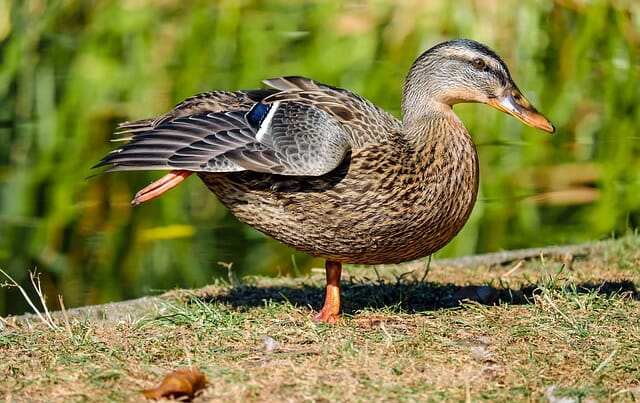Raising ducks on the homestead can be a fun and worthwhile endeavor. In addition to providing succulent meat and rich, delicious eggs, ducks can be very helpful in controlling insects. Not to mention they are just plain fun to watch!
Brooding Ducklings
Raising ducklings is pretty straightforward, and the procedure is nearly identical to that of brooding chicken chicks. Newly hatched ducklings can be brooded by using a broody hen, radiant brooder pad, or with a 250-watt brooder lamp. If using a brooder instead of a hen, choose peat moss or pine shavings for your bedding material for its absorbency.
Feeding ducklings is relatively easy, too. If you can get a waterfowl starter with a protein level of 17.5 percent, that is ideal. If not, plain old chick starter will work just fine (protein levels will vary from 18-22 percent). It is not recommended to feed ducklings any form of medicated feed, so be sure to stay away from those. In addition to chick starter, make sure your ducklings have access to plenty of clean drinking water.
At around 3-4 weeks old you can start allowing your ducklings a little “pool” time. Make sure the water is not very deep and that it is located somewhere that you don’t mind everything getting wet – ducklings love to splash! We’ve used an old glass casserole dish with great success. You want the ducklings to be able to stand up in it to prevent drowning. Until full feathering, avoid the temptation of kiddie pools. as ducklings are likely to drown.
Once your ducks have reached 4-6 weeks old they can be moved outside. Just make sure they have a good solid shelter until they have fully finished feathering.
Caring For Your Grown Ducks
Ducks are fairly efficient foragers and are very good at eliminating slugs, grasshoppers and a wide range of other insects, including mosquito larvae. If you have a fenced-in area for them to free range, by all means do so! Just keep in mind that for their safety they should be penned at night.
Adult ducks are pretty versatile and don’t require a whole lot in terms of shelter or housing. A simple 10×10 chain-link dog run and a dog house for shelter will do a small flock of ducks just fine, even in cold weather. Do make sure to put a wire top on their run to keep out predators like hawks, owls and raccoons.
Diatomaceous Earth: The Best All-Natural De-Wormer For Your Livestock!
Feeding your ducks is the same as feeding a chicken layer flock. A good layer feed around 16 percent in protein will provide them with all the nutrition they need. It’s best to feed ducks in a trough or bowl so that they are better able to get their wide bills in. You can feed pellets or crumbles, though we’ve found that they have a much easier time with crumbles. Make sure that your ducks have access to clean drinking water, again, with openings big enough to get bills in.
Beyond food, water and shelter, ducks do require some sort of bathing water to keep their feathers in good shape and themselves healthy. If you don’t have access to a pond or creek, a good option can be an inexpensive kiddie pool. You’ll want to make sure you clean it on a regular schedule, and provide them with bricks or some other way to get both in and out of the pool. For some of the heavier breeds like Pekins or Rouens, a pool can be a bit of a necessity if you are trying to breed them to make ducklings, as the water helps aid those heavy breasted breeds in mating.
If you don’t want the hassle of dealing with a kiddie pool, you can easily provide your ducks with bathing water with any bucket or pan deep enough for them to submerge their heads in. This allows them to clear their eyes and nose holes. In the past we have used inexpensive concrete mixing tubs from our local home improvement store. They aren’t so big as to be difficult to clean, and four inches of water in one will allow your ducks plenty of fresh water for keeping themselves clean.
What advice would you add? Share it in the section below:
